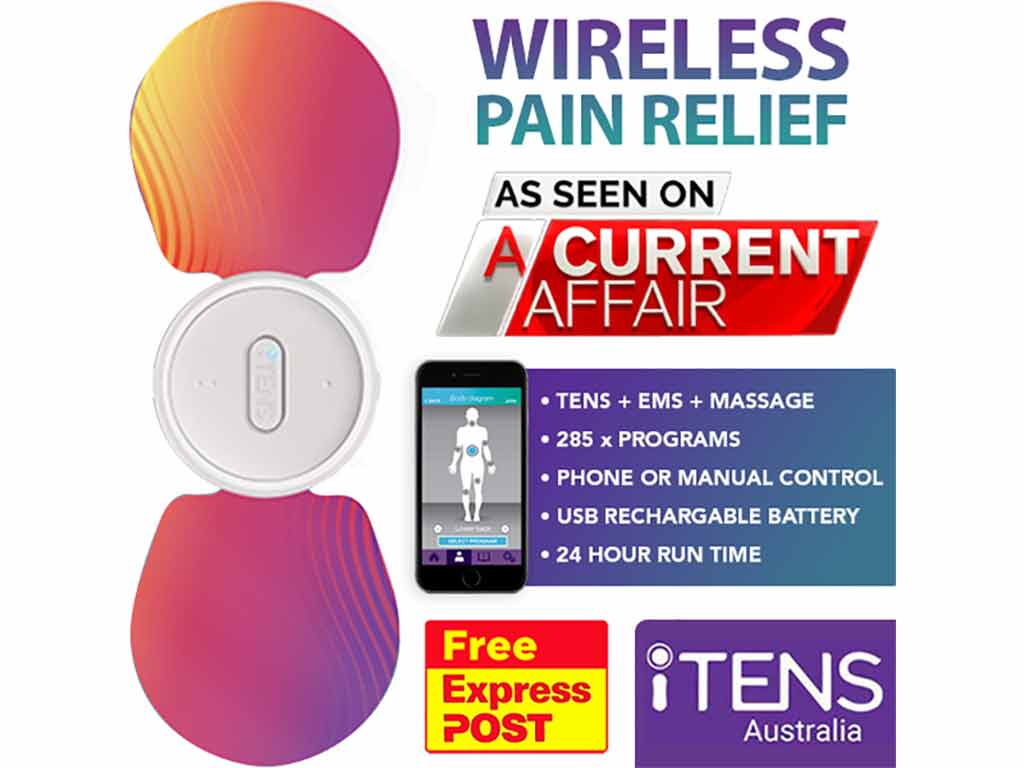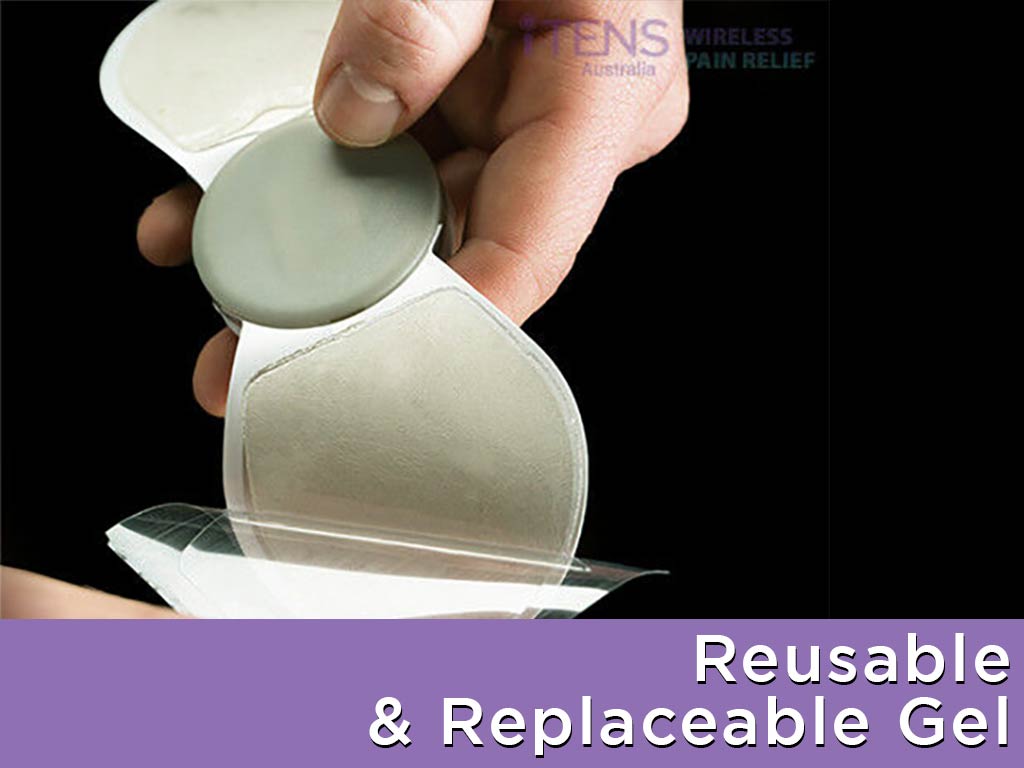
Transcutaneous Electrical Nerve Stimulation (TENS) therapy is a non-invasive and drug-free method of pain relief. A TENS machine for nerve pain works by sending gentle electrical impulses to the affected area, which disrupts the pain signals and provides relief. Additionally, it triggers the body to produce endorphins, which are natural pain-relieving chemicals. This helps further alleviate the discomfort. Moreover, the TENS machine also boosts blood circulation in the area, promoting healing and reducing pain.
Dealing with nerve pain is challenging. It can interrupt sleep, limit mobility, and affect overall quality of life. Activities that used to be enjoyable may now cause discomfort and frustration. Nerve pain can also impact emotional well-being and mental health. Therefore, individuals need to seek treatment. This article will provide information about a TENS device for nerve pain, including its mechanism of action and proper pad placement.
What is a TENS Machine for Nerve Pain?
TENS machine for nerve pain is an alternative treatment option to prescription drugs. It utilises a portable electronic device that sends low-voltage electrical impulses through the skin to the nerves. This can help reduce the pain coming from neuropathic conditions. Traditional machines are handheld with wires, while more modern units are wireless with Bluetooth connectivity.
A TENS device is designed to be user-friendly. People wear it discreetly under clothing for long periods. It typically comes with sets of electrode pads that users can place directly on the skin over the painful area. Many individuals find TENS a convenient and effective way to manage their neuropathic pain. They do not need to depend solely on medication or invasive procedures. However, speaking with a doctor before use is essential.
People can receive temporary pain relief and other positive effects, such as relaxation, from TENS. Nevertheless, they must remember that it is not a cure for the underlying cause of the pain in adults. Professionals often use it as part of a comprehensive pain management plan that may include physical therapy, medication, and more treatments for pain.
Common Types of Nerve Pain
- Proximal neuropathy – a nerve damage that affects only one side of the body.
- Peripheral neuropathy – a type of nerve damage that commonly affects the extremities, such as the hands and feet.
- Radiculopathy – compression or irritation of the sensory nerve endings. Pinched nerves in the neck and lower back are some of the common conditions.
- Autonomic neuropathy – a disorder of the nerves that control the internal organs and essential functions of the body, such as breathing and digestion.
- Diabetic neuropathy – nerve damage due to diabetes or high blood sugar levels. It causes pain and numbness in the hands, legs, and feet.

How a TENS Machine for Nerve Pain Works
A TENS machine for nerve pain works by utilising the Pain Gate Control Theory. This theory suggests that the electrical currents from the TENS electrical device disrupt the pain signals sent to the brain. The device achieves this by employing high-frequency electrical pulses, typically ranging from 50 to 150 Hz. This type of therapy is particularly effective for intense or acute pain conditions.
Another mechanism behind TENS therapy is its ability to trigger the release of endorphins. The electronic device accomplishes this by using low-frequency electrical stimulation. This generally ranges from 2 to 5 Hz. Endorphins are natural pain relievers that the body naturally produces. This is particularly beneficial for people dealing with chronic pain conditions, offering a more sustainable solution.
Furthermore, TENS devices can improve blood circulation, reduce inflammation, and support heal damaged tissues. The electrical stimulation can increase blood flow to the affected area. As a result, it can speed up the healing process. Some people also use TENS machines to help with muscle rehabilitation and re-education by promoting muscle contractions.
Advantages of Using Electrotherapy
Using electrotherapy as a method of pain relief offers several advantages. For instance, it is non-invasive, meaning it does not require any needles or surgery. The adjustable settings of the device also allow for personalised treatment. Additionally, this targeted form of pain relief can help reduce pain messages in individuals without affecting other areas of the body.
Furthermore, the TENS device is a drug-free method, making it non-addictive and safe for long-term use. It provides a comfortable intensity of stimulation through the use of electrode patches. Lastly, the machine is portable, making it convenient to use at home or on the go.

Proper Pad Placement When Using a TENS Machine for Nerve Pain
The exact electrode placement is essential to the effectiveness of the TENS machine for nerve pain. Position the pads on either side of the pain area. It should be near the affected nerve to stimulate them optimally. For back pain, place the electrode pads on both sides of the spine or one side for localised pain.
For joint pain, position the TENS electrodes around the joints and not directly into them. Additionally, individuals may alter the pad placement until they find the spot that produces the best result. For muscle stimulation, place the electrodes on top of the muscle group. This will provide an even distribution of electric currents and produce contraction more efficiently.
Moreover, it is essential to remember that electrodes should not overlap. Maintain a one to two inches distance between each pad. Placing them too close may cause a burning sensation due to too much current passing through the narrow area. In contrast, if the pads are too far apart, they may not stimulate the nerve endings sufficiently.
How to Use the Device?
The process of using a TENS device for nerve pain is straightforward. To start, place the electrode patches near the area of pain. After attaching it in position, activate the TENS unit and adjust the settings, such as pulse rate, pulse duration, and pulse intensity. The outcome varies based on the specific condition.
Additionally, begin with a low intensity and gradually increase to a level that feels comfortable. Ensure that the tingling sensations from the electrical device are adequately intense yet free from any painful sensations. If there is any discomfort, lower the intensity until the sensations are bearable.
Conclusion
In conclusion, a TENS machine for nerve pain offers a drug-free alternative for managing neuropathic conditions. By sending low-voltage electrical impulses, it disrupts pain signals through the Pain Gate Control Theory. The device also promotes the release of endorphins, providing relief for both acute and chronic pain. Additionally, it can also improve blood circulation and support tissue healing. However, users must consult their doctor before incorporating TENS therapy into their routine.
Proper electrode placement is crucial for effective TENS machine use in managing nerve pain. Whether targeting specific nerves, joints, or muscles, users should position the pads carefully, avoiding overlap and maintaining a suitable distance. Activation involves placing the electrodes, adjusting settings, and gradually increasing intensity for optimal comfort. By following these simple steps, individuals can harness the benefits of TENS therapy to alleviate nerve pain and enhance their overall well-being.







